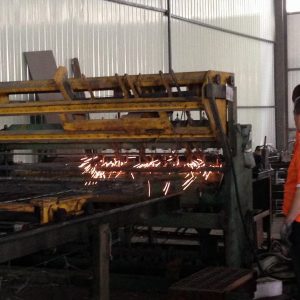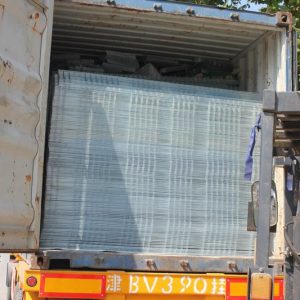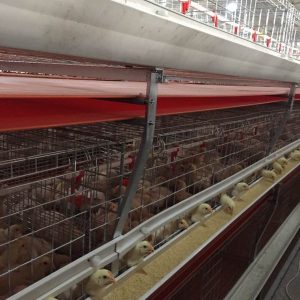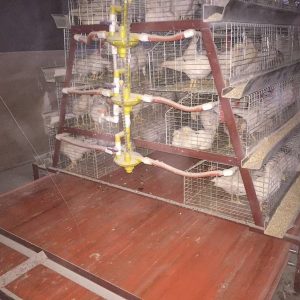
Please do these 10 points for raising layers in winter!
The low temperature in winter and the reduction of air humidity can easily affect the growth of chickens. Therefore, health care is beneficial to the growth of chickens.
prepare in advance
Before the arrival of the cold winter, conduct a comprehensive inspection and maintenance of the chicken house, plug the wall cracks, replace the door and window glass, prepare the film and grass curtains for winter use, and remove the pergola in time for the semi-open chicken house, and install the plastic film packaging. Bracket.
At the same time, we must do a good job in the preparation and installation of heating facilities, especially in chicken farms that use coal-fired stoves to heat and use fire kang to brood chicks. We must pay attention to checking the flue and chimney. If smoke or air leakage is found, plug and replace it as soon as possible Or make a transformation. Large-scale chicken farms must also prepare enough commonly used drugs and purchase necessary green and juicy feed.
Adjust the ration formula
The temperature difference between day and night in winter is large, and the chicken body consumes more energy at night. Properly increase the energy level of chicken feed, which can generally be 5% to 10% higher than the normal standard. In addition to increasing the proportion of energy feed, 1% to 2% of animal fat can be added to the feed. If conditions permit, an appropriate amount of brown sugar can also be added to the layer’s drinking water.
After the long laying period and hot summer, laying hens are tired and physique in winter. At this time, they should be fed more animal protein feed to ensure that chickens that have not moulted continue to lay eggs and promote the rapid growth of moulted chickens. Full feathers to restore egg production as soon as possible.
Adding vitamin C to chicken feed, adding 200 mg per kilogram of diet, or adding baking soda, the dosage is 0.10% to 0.15% of the feed amount, which can not only increase the egg production rate of the chicken, but also increase the thickness of the eggshell and prevent Economic losses caused by broken eggshells. To supplement vitamins, appropriate amount of carrots or green radishes should be added to the feed. The radishes can be chopped and mixed in the feed before use.
High-quality cod liver oil is used together, and the production performance is significantly improved.
Reasonably adjust the group
Timely weed out low-yielding chickens in old flocks and thin and weak chickens in new flocks. The hens that have been moulted should be separated to form a new group, focusing on keeping the hens with bright red crests, large spacing between the pubic bones, moist and loose anus, and soft and elastic abdomen.
However, when the flat-raised chicken flock is adjusting the group, adding new chickens will destroy the original stable pattern and often fight. Therefore, when adjusting the chicken flock, the number of the group should be controlled. Generally, 100-200 is appropriate. It is necessary to observe carefully and stop the pecking phenomenon in time. For hens that have been fighting strongly and hens that have been pecked, they should be caged separately.
Pay attention to supplement the light
In order to maintain the normal laying curve of the laying hens, the laying hens should be appropriately supplemented with light. The lights can be turned on twice a day, the first time the lights are turned on at 4:00 to 5:00 in the morning, and the lights are turned off after dawn, and the lights are turned on at night for the second time, and the lights are on until 8:00 to 9:00 in the evening. Turn off the lights. When the light is insufficient in rain and snow, you can also turn on the lights during the day to supplement the light. Make sure that the lighting time of the laying hens is stable at 16 hours a day.
Pay attention to daily management
Pay attention to watching and listening to the weather forecast. Before strong winds and cold currents come, be sure to keep warm. Chicken nerves are very sensitive and are prone to adverse stress reactions to external stimuli. In winter, nerves are more sensitive and fragile. A little stress will seriously affect productivity.
Therefore, in addition to the regulation of the small environment of the chicken coop, the management personnel should be as slow as possible during the daily management of feeding, feeding, watering, egg picking, and cleaning to prevent adverse stress reactions that may lead to production suspension or induce diseases. Broilers raised outside the house should be driven into the house at night when the temperature is low. In order to promote the feeding of the laying hens, feed can be added at night, with the chickens eating the feed before turning off the lights. There should be a transitional adaptation period of 2 to 3 weeks for feed replacement to prevent sudden changes from causing stress.
Do a good job in environmental disinfection
Winter is the prevalent season of infectious diseases of the respiratory system. Therefore, environmental disinfection, appliance disinfection, and drinking water disinfection are equally important. Closed chicken houses must be disinfected with chicken air once a week. 0.5% strong disinfectant spray can be used. The outside environment can be disinfected with 10%-20% lime water or 3%-4% caustic soda spray.
The pans, buckets, buckets, drinking fountains and other utensils in the chicken house can be soaked and disinfected with 0.01% Junduqing or Baidusha or 0.05% strong disinfectant solution. Tools such as vehicles, brooms, and shovel used for cleaning feces should also be cleaned and disinfected regularly.
Prevent gas poisoning
The cleaning of the chicken coop should also be strengthened in winter. If the feces and wet litter are not removed in time, the accumulation of ammonia or other harmful gases often leads to poisoning events or other diseases. For broilers that grow faster, it is also easy to cause ascites syndrome. Therefore, when raising broilers in winter, pay attention to using fresh, dry, soft, mildew-free, and absorbent litter, preferably shavings. Turn the bedding frequently to prevent it from becoming hard and compact. The laying pad should have a certain thickness, generally above 5 cm. In normal operations, minimize sprinkling and prevent the sink from leaking to wet the litter. In addition, ammonia absorption deodorants can be used to reduce the ammonia concentration in the chicken house. Commonly used are ferrous sulfate, superphosphoric acid, copper sulfate, slaked lime, etc.
plugging loopholes in epidemic prevention
The main principle of disease prevention is to do a good job in environmental disinfection and immunization as early as possible. The immunization schedule, the immunization record sheet, and the autumn and winter chicken immunization procedures should be carefully checked and analyzed, and the immune protection period should be exceeded. Chicken flocks, flocks that have not been vaccinated, and chickens with poor immunity should be vaccinated in time according to the actual situation of the local epidemic situation in order to close the loopholes in epidemic prevention and ensure that the flocks can survive the winter safely.
Pay attention to observing manure
The morphological characteristics of feces are very typical to reflect the health of the flock. In winter, the management of chicken flocks must pay attention to the shape and color of the feces to find out the cause of the disease. Chickens have white, mushy, fishy feces, and white or lime-like feces are often adhered to the villi around the anus, or the feces clump and block the anus, which proves that they have pullorum disease.
When chickens suffer from pullorum, paratyphoid fever, colibacillosis, and bursal disease, the stool is white, sometimes mushy and sticks around the anus; when suffering from Marek’s disease, typhoid fever, Newcastle disease, cholera and other diseases, the stool is mostly green When chickens suffer from colds and enteritis, the feces are often covered with a mucous outer membrane with blood stains. When they suffer from coccidiosis, the feces are also obviously blood red. When chickens suffer from leukemia, colibacillosis, aspergillosis, or feed and drug poisoning, they often show diarrhea; when chickens suffer from parasitic diseases such as roundworms and tapeworms, they are often accompanied by diarrhea, discharge bloody mucus, and have a foul smell. And sometimes excrete the worm body.
Isolate chicken diseases in time
While paying attention to observing the feces of the chickens and picking out chickens with abnormal feces in time, carefully observe the attitude, appetite and appetite of the chickens when feeding, feeding, and picking eggs every day. If you are not recovering, you should be picked out in time for further examination and treatment. Chicken flocks are most susceptible to respiratory infections in winter. When observing flocks, do not neglect the observation and identification of breathing methods and breathing movements. If chickens are diagnosed with infectious diseases, they should be isolated for observation and treatment quickly, and the original flocks should be carefully and comprehensively inspected, and the ground, litter, water tank, feeder and air in the house contaminated by the diseased chickens should be thoroughly disinfected .



